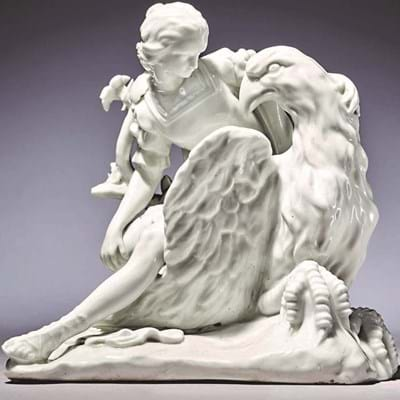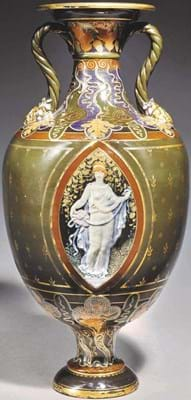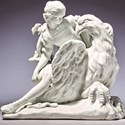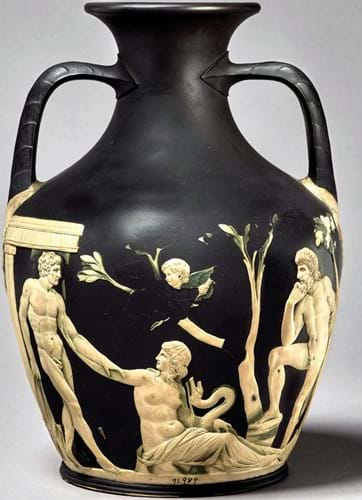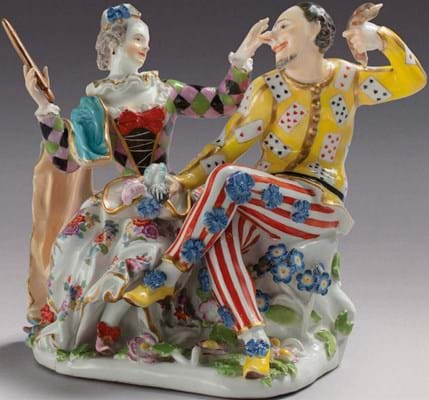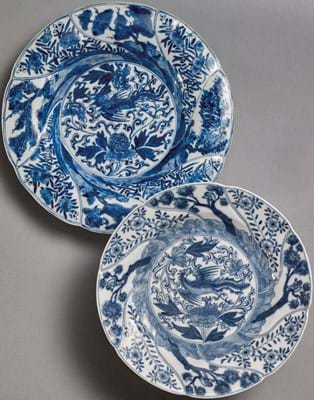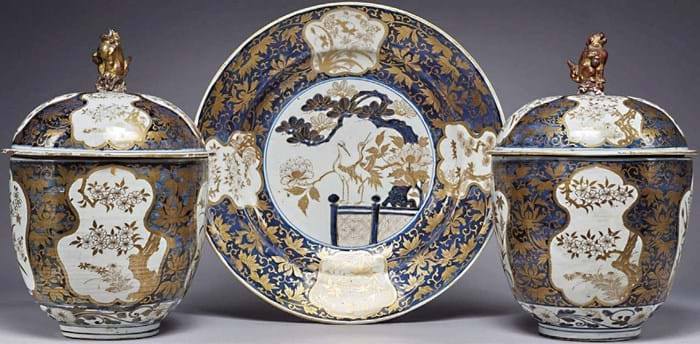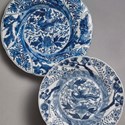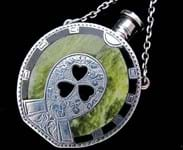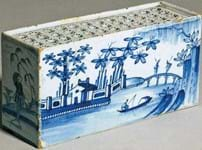Sotheby’s October series of Decorative Arts sales features two single-owner collections offered on consecutive days.
First off on October 23 is the 256 lots of Wedgwood and other English ceramics from the collection formed by the retail and real estate businessman Bernard Starr (1929- 2018) and his wife Lydia (1931-2009).
This will be followed the next day by 200 lots of selected Meissen and other ceramics from the extensive collection formed by Henry Arnhold (1921-2018).
The Starr collection
The Starrs began their collecting odyssey in 1968 when they purchased a jasper Wedgwood plaque while on holiday in Maine.
Interest was sparked and they went on to join the Wedgwood Society of New York and Bernard rose to become its president.
Buying at auctions and fairs, they amassed an extensive collection of its products that spanned both 18th and 19th century wares. It was particularly strong on pieces from the Wedgwood and Bentley period (1769- 80) encompassing 18th creamwares and a range of the dry body products of Etruria: jasper, caneware, basalt and a particularly good range of encaustic decorated pieces.
Their interest extended beyond Wedgwood, however. Anne Forschler- Tarrasch, curator of decorative arts at the Birmingham Museum of Art, points out in her catalogue introduction, “…the Starr collection really is a collection of collections”.
Lydia was interested in rare examples of early 18th century English porcelain, especially the small figures and ‘toys’ and in the delicate reticulated ornamental wares produced by George Owen for Royal Worcester while both of them were interested in 19th century pâte-surpâte pieces. So, while Wedgwood makes up the lion’s share of the content, the sale opens with 40 lots of mainly Bow, Chelsea and St James’s group figures and scent bottles.
The final sections comprise over 20 lots of Owen’s vases and another 40 or so lots of pâte-sur-pâte from Sèvres and Minton – including some of Marc Louis Solon’s vases that are a tour de force of this technique.
Starr Wedgwood
The Starrs had an academic interest in Wedgwood as well as an aesthetic appreciation (they accumulated an impressive reference library which was donated to the Frick Collection).
This 10¼in (26cm) black jasper version of the Portland vase illustrates that academic leaning. Famously modelled on the classical cameo glass vase dated to the reign of Emperor Augustus which was acquired by Sir William Hamilton, then sold to the Duchess of Portland, Wedgwood produced a number of copies of this in jasper. The exact volume of ‘first edition’ pieces is not known but Wedgwood hosted private, ticket-only views of the vase in his showroom in 1790. The Starrs’ example was last under the hammer in 1999 at Skinner in Boston (a firm known for its regular Wedgwood auctions) following deaccession from the Chrysler Museum.
It comes with a ticket inscribed Admission to see Mr Wedgwood’s copy of the Portland Vase Green Street Soho between 12 o’clock and 5. With some firing issues amd missing elements to the white relief decoration, it is estimated at $5000-7000.
Second instalment
So large is the Starr collection that there is enough material for a second instalment. The following week, a further 258 lots will be offered for sale by Stair Galleries in Hudson, New York, on November 1.
There will be something on offer at all price points (lots estimated at under $2000 are to be offered without reserve).
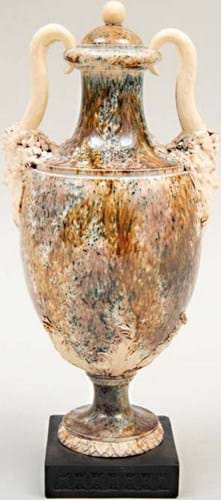
This 8½in (21.5cm) high creamware ‘porphyry’ vase with horned bacchic mask handles from the Wedgwood and Bentley period has an estimate of $500-800 in the Stair sale of the second tranche of the Starr collection.
Wedgwood again makes up the bulk of the content and there is a similar mix of Wedgwood and Bentley basalt, jasper and creamware items as well as later pieces. Also offered are some examples of 18th and 19th century English and Continental porcelain more pâte-sur-pâte and finally a small section of furniture, Asian ceramics and decorative items.
The Arnhold Collection
Henry H Arnhold (1921-2018) was a philanthropist and collector with a wide circle of friends in the dealing and museum world. While his collecting tastes encompassed Chinese and Contemporary art, he was chiefly known for his fascination with Meissen porcelain.
“He created the largest private collection of Meissen outside Dresden,” notes Christina Prescott- Walker, one of the Sotheby’s specialists for this sale.
Born in Dresden, Arnhold and his family left Germany before the outbreak of the Second World War and ended up in the US. He rose to become chairman of the family’s investment bank Arnhold and S Bleichroeder (later First Eagle Investment Management).
Arnhold went into the office daily until the end of his life but as the years advanced he also spent an increasing amount of time on other interests.
In his 70s he started to build on his mother’s collection of Meissen porcelain and travelled around Europe buying pieces for his collection at the major antiques fairs and auctions, and attending exhibitions and visiting museums.
German reunification in 1989 enabled him to devote more time to visiting the city of his birth and the porcelain collection formed by Augustus the Strong of Saxony, founder of the Meissen factory, much of which is now housed in the Zwinger Palace.
Arnhold made a substantial bequest of his Meissen collection to the Frick Collection but a proportion was also destined to be offered for sale at auction to benefit his charitable foundation: hence the 200-lot sale to be held at Sotheby’s on October 24.
Meissen wares make up the bulk of the content but Arnhold liked to collect the Asian prototypes which so fascinated Augustus the Strong and provided the templates for the pieces produced in his Meissen factory.
He managed to acquire some of the original Oriental pieces that had come from the Japanese Palace, Dresden, and sought to unite examples of Asian prototypes with the Meissen copy. In the latter case Sotheby’s are offering both the Asian and the Meissen items as a lot, keeping them together.
A group of Commedia dell arte figures modelled by Johann Joachim Kändler also appears.
Sotheby’s has already sold a selection of items from the collection in other disciplines, including a Gerhard Richter painting and some Asian art also to benefit the Arnhold Foundation.
On the weekend prior to these sales Sotheby’s is mounting a lecture series. On October 19 there will be a symposium on Wedgwood and the Starr Collection while October 20 features a lecture by Maureen Cassidy-Geiger, Henry Arnhold’s curator, titled A Collector and his Curator – Meissen Adventures with Henry Arnhold.


